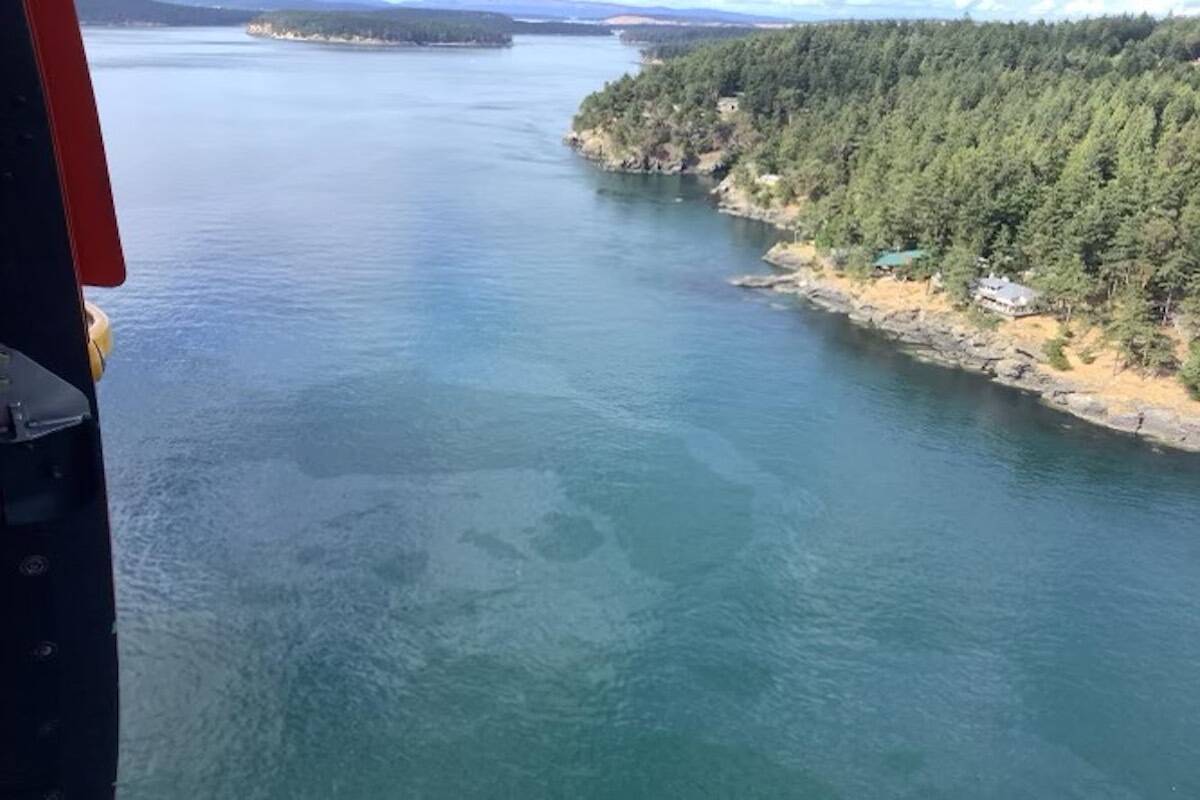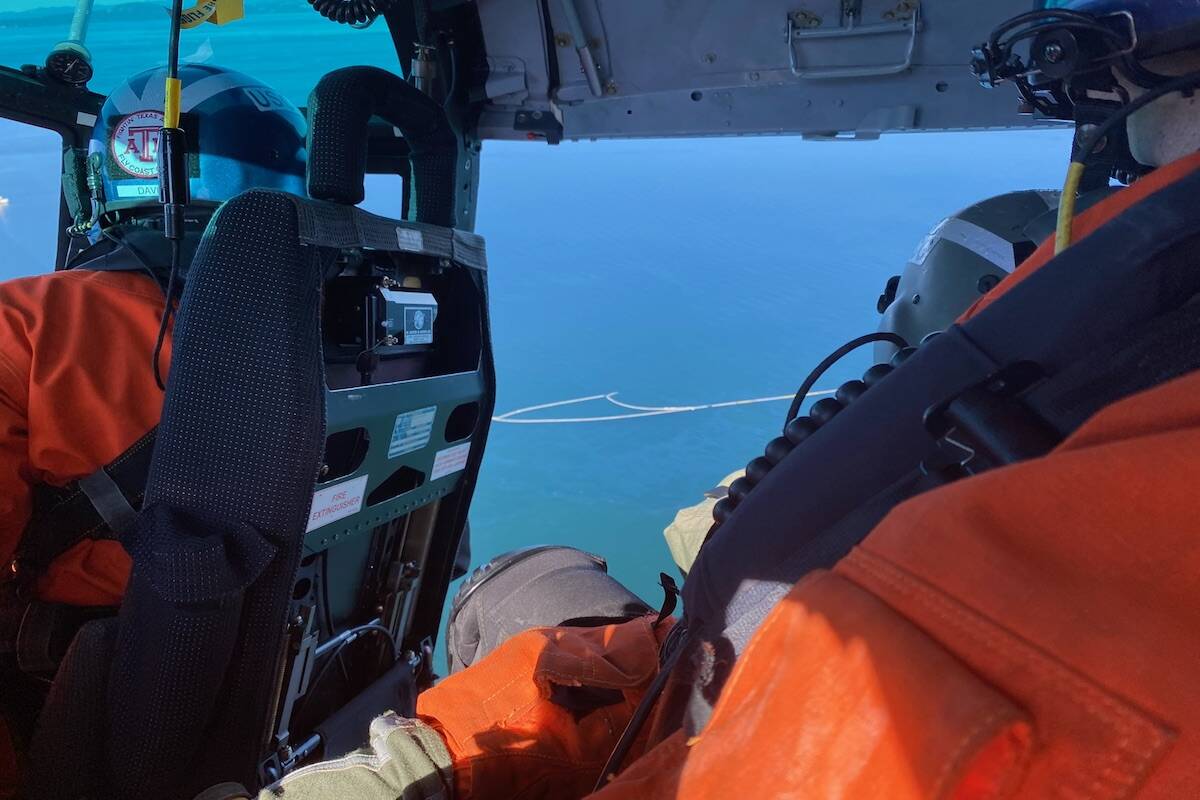Authorities continue to respond to an oil spill between Greater Victoria and Washington state after a fishing boat holding thousands of litres of fuel sank on Saturday.
The United States Coast Guard first alerted the public to the 49-foot vessel going down off of San Juan Island’s Sunset Point on Saturday evening. A sheen spanning more than three kilometres was reported to have entered Canadian waters during the evening hours. Sunset Point sits across the way from Island View Regional Beach in Greater Victoria.
The boat had about 9,460 litres of diesel in its tank and another 380 litres of oil and hydraulic fluid aboard before it went down. An absorbent boom and other materials have been deployed to recover pollutants and protect environmentally sensitive areas, the American Coast Guard said.
Response crews have used underwater hydrophone acoustics to monitor the affected area and surrounding waters for any marine mammal activity, with a focus on the southern resident killer whale population.
The officials said some of the endangered whales were near San Juan Island’s southern tip at the time of the incident, but none were observed in the affected area and reports show them heading west toward the Port Angeles area.
The North Oceanic and Atmospheric Administration, the Whale Museum of Friday Harbour and Sound Watch are assisting the coast guard with the marine life response. Sightings of oiled animals can be reported to 1-800-22-BIRDS.
The boat’s crew members were rescued by a Good Samaritan and were not injured in the incident.
Their fishing vessel lies 100 feet (30 metres) deep and diving operations are expected to start on Monday. That will include conducting a scene assessment and plugging the vents. A dive plan to efficiently and safely contain the area, recover pollutants, remove potential contaminants from the sunken vessel and potentially salvage the wreckage was in the works on Aug. 14.
As of Sunday night, the U.S. Coast Guard said one of its boats is on scene to manage traffic around the area and enforce laws and regulations to protect marine species. A safety zone of more than 900 metres around all responding diver boats is in place as of 7 a.m. on Monday.
“The safety of the local public and their interests, and preservation of the environment and protected marine species, continue to be the top priorities throughout the response and recovery process,” the coast guard said.
Air monitoring equipment has also been moved into the San Juan Islands to monitor the level of airborne contaminants.
Canadian groups are also involved through the CANUSPAC Joint Response Team. The tool is used to help facilitate information and resource sharing across the international boundary.
READ: Oil spill ‘not matter of if, but when’: Island councils renew call to Canada for Sidney rescue tug
jake.romphf@blackpress.ca. Follow us on Instagram.
Like us on Facebook and follow us on Twitter.
Greater VictoriaSalish SeaState of Washington


